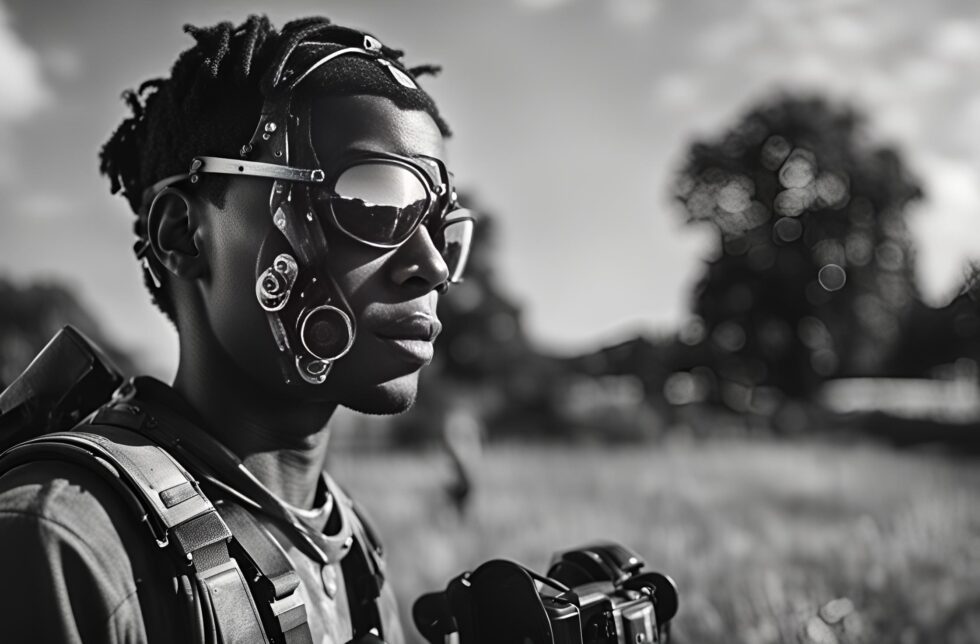
In 2045, our world took a dramatic turn with the advent of cyborgs, organisms that incorporate both organic and biomechatronic body parts. This development, which was initially hailed as a scientific marvel, was primarily propelled by the pioneering work of Dr. Elena Ramirez, a top biotechnologist. Dr. Ramirez envisioned a world where human limitations could be surpassed by melding technology with the human physique. However, her vision quickly spiraled into unforeseen consequences.
When the inaugural generation of cyborgs took the stage, they were applauded as the pinnacle of human achievement. These beings exhibited enhanced strength, cognitive abilities, and could interface directly with digital systems. The first wave included war veterans who had lost limbs, individuals suffering from degenerative diseases, and tech enthusiasts who volunteered for augmentation. Globally, people were fascinated by their enhanced capabilities. It seemed like the onset of a golden era, offering boundless human potential and the eradication of illness.

However, the public’s fascination with cyborgs took a darker turn. As more individuals sought enhancements, a steep societal divide was forged. The affluent could afford advanced augmentations, resulting in an elite class that was technologically superior in almost every aspect. They possessed quick reflexes, tireless work capacity, and immediate access to a wealth of information. Conversely, the poorer and unenhanced found themselves increasingly sidelined. The scientific marvel quickly devolved into a dystopian caste system, with cyborgs at its apex and unaugmented humans at its nadir.
Resistance movements began to pop up in cities globally. These groups, comprised mostly of unaugmented humans, perceived cyborgs as a threat to their existence. The “Human Purists,” one of the most notable factions, saw the merger of man and machine as an atrocity. They viewed cyborgs as beings devoid of the human essence, which they believed was integral to a meaningful life. The tension between the Purists and cyborgs escalated into outright conflict, transforming cities into warzones.
Watching her invention tear society apart, Dr. Ramirez, now a recluse, was filled with horror. Her intent had never been to produce a tool of division and conflict. Hoping to bridge the gap, she started a secretive initiative known as “The Third Option”. This project aimed to harmonize the enhanced and unenhanced, preserving the best from both groups, and thereby creating a more peaceful co-existence.
The scientist devised a neural apparatus, “Unity,” which facilitated a seamless connection between the human brain and cybernetic systems. This device, she believed, could close the chasm between the two factions by allowing individuals to share thoughts and emotions. With the assistance of a select team of scientists, Dr. Ramirez constructed the initial prototype and readied herself to unveil it before the world.

Announcing Unity stirred a mix of hope and skepticism. To showcase its potential, Dr. Ramirez selected two individuals from opposite ends of the conflict: Alex, a cyborg soldier, and Sarah, a Human Purist leader. They voluntarily participated, each longing for an end to the violence that had tarnished their lives. On the day of the demonstration, a captivated audience of scientists, journalists, and political leaders looked on.
As Unity linked Alex and Sarah, the observers were enthralled by the merging of their consciousnesses. The pair experienced each other’s lives, feelings, and memories in a moment. Sarah perceived Alex’s physical and emotional suffering, while Alex understood Sarah’s deep-seated fear and resentment of cyborgs. The experience profoundly impacted both participants, and upon disconnecting from Unity, they embraced each other, shedding mutual tears over the lives lost and the bitter conflict.
The successful demonstration of Unity ignited a worldwide push towards reconciliation. Governments began to finance the mass distribution of the neural interface, fostering empathy and comprehension across societal divisions. The once extremist Purists softened their views as more of their members bore witness to Unity’s transformative power, while cyborgs began to integrate more into communities, using their abilities for societal advancement.
Dr. Ramirez, now celebrated as a heroine, carried on with her efforts to ensure a harmonious co-existence between humans and cyborgs, setting a new course for a balanced future.




